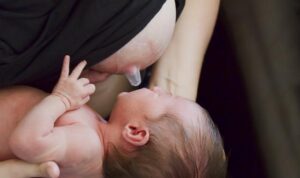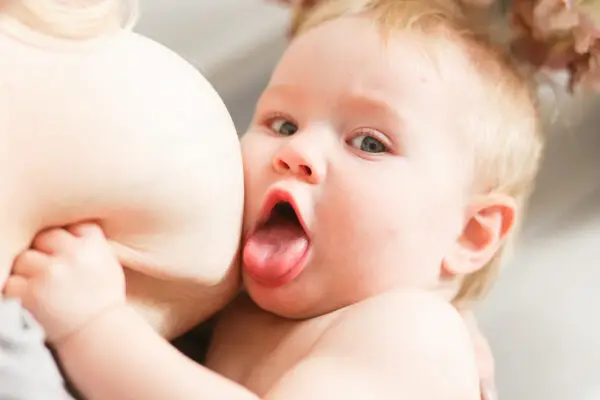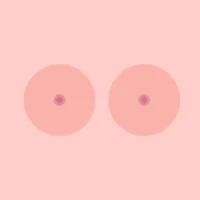A nipple shield is a slim stretchy silicone cover, placed over the nipple before baby attaches.
There are holes on the shields “nipple end” that allows the milk to flow from the breast to the
baby once the baby is latched over the shield. “The shield is shaped like a hat with a brim and a crown. Some shields have cut-out sections around the brim that allows your baby’s nose and/or chin to touch your skin rather than the nipple shield.” Australian Breastfeeding Association (ABA) May 2020.
Women around the world have been using nipple shields for many years. The use of shields
can be controversial, but many clinicians recommend the use of nipple shields under
certain circumstances. It is important to determine why the nipple shields were needed and
is there may be a need for support from a midwife or lactation consultant.

Coentro et al., 2021 demonstrated in their Randomised Control Trial (RCT) shield use did not
impact either milk production or milk transfer in breastfeeding women experiencing nipple
pain. A few practitioners feel that nipple shields are not necessary and babies can do the same
on the breast without a nipple shield (Dr Jack Newman, International Breastfeeding Centre)
Nevertheless, if mothers have decided (or at times, have been given nipple shields soon after
the birth), to use nipple shields, it’s important to obtain the correct information on their use
and to monitor the milk supply of the mother. Coentro et al., 2020 mechanical study noted
experimental data suggesting that nipple shield use may reduce milk removal. Close clinical
monitoring of breastfeeding mothers using nipple shields is warranted. (ABA, Nipple shields, 2020)
What Shields Can and Cannot Do
Shields can
- Therapeutic supply oral stimulation that an infant cannot obtain from the mother’s nipples because of inability to latch or transfer milk
- Create a nipple shape in the infant’s mouth
- Compensate for weak infant suction
- Present a stable nipple shape that remains during pauses in sucking bursts
- Maintain the nipple in a protruded position
- Affect the rate of milk flow
Shields cannot
- Correct milk transfer problems or weight gain if the mother has inadequate milk volume
- Fix damaged nipples if the cause is not discovered and remedied
- Replace skilled intervention and close follow-up
(Walker, 2020)
Why would you need to use a nipple shield?
- Nipple pain
- Sore and damaged nipples
- Premature baby
- A baby learning to feed at the breast after using a bottle.
- Any oral issues (e.g., high palate, tongue and mouth issues)
- Different nipples, smooth, inverted or size.
What can help to assist with baby going to the breast?
- Skin to skin contact
- Improving positioning and attachment
- Help with flow of milk
- Remember the nipple shield may just be a band aid to assist breastfeeding and nipple pain. Be mindful the need for a review by a breastfeeding specialist may be necessary,
ideally an IBCLC lactation consultant.
Using a nipple shield
Please see this article from ABA for the step-by-step guide on the use of a nipple shield.
https://www.breastfeeding.asn.au/resources/nipple-shields
Cleaning nipple shields
Nipple shields do not need to be sterilised. Rinse them under cold water first so the milk
residue on the shield doesn’t curdle. Then wash the shields with hot water and soap (mild
dishwashing liquid is ideal). Rub the shield well in your hands so the shields become clear
again. Rinse well in under hot water. Shake off any excess water and wipe and dry with a soft
lint free towel. If the shield is opaque after cleaning, repeat the clean. If the shield is opaque,
they have difficulty sticking to the breast.
Follow up
Following up on a family whereby the mother is using nipple shield is vital to that the infant
is latched properly and removing milk from the breast. This can be achieved either face to
face or remotely. Keeping an eye on the mother’s milk supply and the steady weight gain of
the baby is also important. Management low milk supply, issues with the baby (e.g., oral
concerns, tongue tie etc) and latch concerns need to dealt with appropriately.
If you’d like assistance with feeding and the use if nipple shields, our IBCLC Mary can assist you. You can find out more about her here.
Further information
https://connect.springerpub.com/highwire_display/entity_view/node/67736/full
https://pubmed.ncbi.nlm.nih.gov/33305973/a







